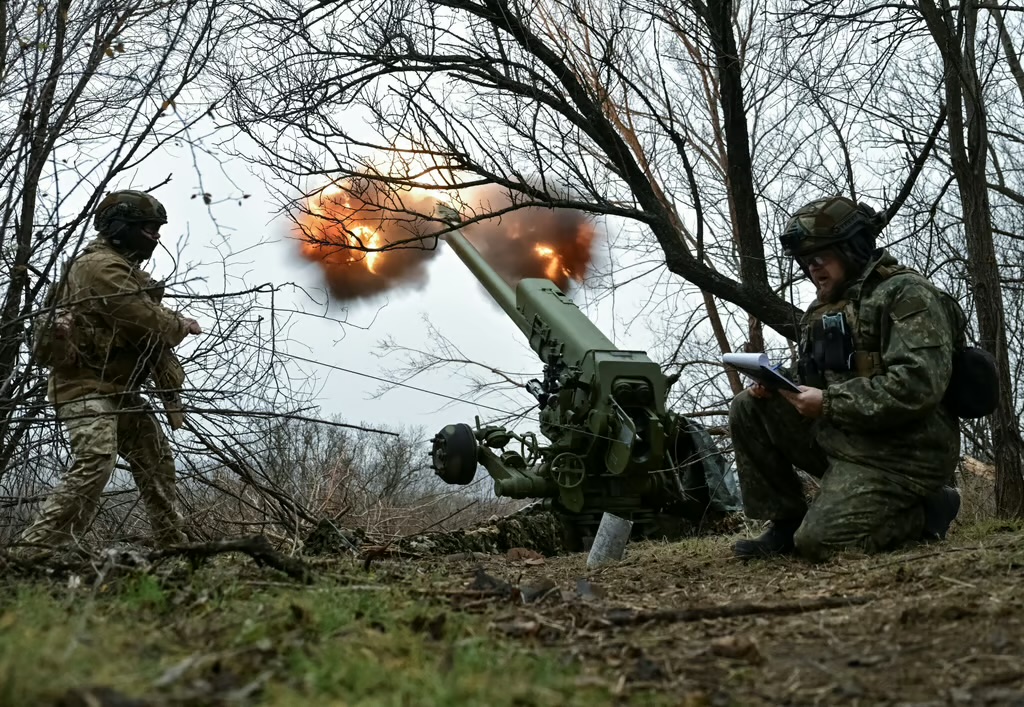Russia launched a missile strike on Kyiv early Saturday, claiming it was a response to Ukraine’s earlier use of US-made ATACMS tactical missiles. This exchange marks another chapter in the escalating conflict between the two nations. The attack caused significant damage in central Kyiv and claimed the lives of at least four people, with several others injured.
The Attack on Kyiv
The missile strike hit several locations in central Kyiv, including near a subway station, a water supply pipeline, and even a McDonald’s fast food outlet. The damage extended just a few kilometers from the presidential palace, heightening security concerns. Local officials reported widespread destruction, and emergency responders worked to restore critical services and clear debris from the affected areas.
Ukrainian President Volodymyr Zelensky confirmed the casualties and criticized the strike as a severe escalation. Russian officials, however, claimed the attack was targeted at a rocket manufacturing facility, stating that “all objectives” were successfully achieved.
Ukrainian Retaliation with ATACMS Missiles
The strike on Kyiv follows a significant development earlier in the week when Ukrainian forces allegedly used US-made ATACMS tactical missiles to attack facilities in Russia’s Belgorod region. While Ukraine has not officially confirmed the use of these weapons, the incident marked a new phase in the conflict, introducing more advanced weaponry.
Russia vowed retaliation shortly after the reported ATACMS strike, accusing Ukraine of targeting unspecified facilities in the border region. This escalation underlines the increasing reliance on sophisticated arms and the challenges of de-escalating the conflict.
Civilian Casualties and Infrastructure Damage
Saturday’s missile strike left a devastating impact on civilians and infrastructure in Kyiv. Beyond the fatalities and injuries, essential services like water supply and public transportation suffered severe disruptions. Damaged facilities included a major subway station entrance and vital pipelines.
These strikes also affected other regions in Ukraine. In Zaporizhzhia, at least 10 people sustained injuries from overnight drone and missile attacks. Authorities worked tirelessly to manage the fallout and provide assistance to affected residents.
Drone Warfare Intensifies
Both sides have increasingly relied on unmanned aerial vehicles (UAVs) to inflict damage. Russia reported shooting down 83 drones in the past 24 hours, highlighting the growing importance of drone warfare in the conflict.
Ukraine’s forces targeted an oil facility in the Kaluga region, claiming it supplied Russia’s military. While the attack could not be independently verified, it reflects Ukraine’s strategic focus on disrupting Russian supply lines. Simultaneously, a fire broke out in the Tula region due to falling drone fragments, adding another layer of complexity to the conflict.
Broader Regional Impact
The ripple effects of the conflict are being felt across the region. Strikes on western Ukraine this week prompted Poland to scramble military jets, showcasing the growing concerns among neighboring nations. These attacks also triggered preventive power cuts throughout Ukraine, exacerbating the humanitarian crisis.
The industrial city of Kryvyi Rih, Zelensky’s hometown, also faced deadly strikes, underscoring the widespread reach of the conflict. As the fighting intensifies, regional stability hangs in the balance.
The Trump Factor
The timing of these developments is notable, coming just two days before Donald Trump’s inauguration as US president. Trump has promised to bring a swift end to the war, though his approach remains uncertain. Observers question how he might achieve a settlement between Moscow and Kyiv, especially given the deep-seated animosities and competing interests.
With Trump’s prior statements suggesting a willingness to broker deals, both sides may see his presidency as an opportunity for new negotiations—or a potential risk depending on his strategies.
A Grim Outlook
The ongoing violence highlights the human toll and infrastructural devastation caused by the war. Thousands of lives have been lost, and countless others disrupted as the conflict shows no signs of abating.
Despite international calls for peace, the use of advanced weaponry and retaliatory strikes suggests that both sides remain entrenched in their positions. As global leaders weigh in and mediate, the hope for a resolution depends on compromises that currently seem elusive.
Way Forward
The missile strike on Kyiv and the escalating drone warfare represent a dangerous trajectory in the Russia-Ukraine conflict. With advanced weapons coming into play and both nations digging in their heels, the situation remains volatile. As the world watches, the potential for further destruction looms, leaving civilians to bear the brunt of the prolonged hostilities.

